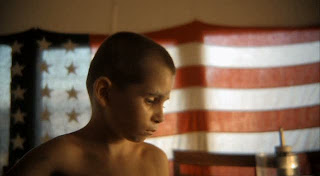Sorry for the delay, been all sorts of busy recently. I have,
however, managed to squeeze in a viewing of ‘Dredd 3D’. At first I was pretty
reluctant to see it, though a 95% approval rating on Rotten Tomatoes, coupled
with the fact that it was British funded, whet my appetite.
It’s modest budget really makes it worthwhile. Making an
action packed comic-book adaptation, set in the future, for $30 million in
today’s blockbuster climate of big explosions, and grossly over the top CGI, is
no mean feat. And for this, Dredd must be commended…It also stars the lovely
Lena Heady, who I’ve only just recently had the pleasure of watching, having
spent most of my summer with the Game of Thrones box sets.
The film centres around a day in the life of Judge Dredd. Dredd
lives in Mega-City-One a sprawling metropolis of 800 million residents and
17,000 crimes a day. The only force of order is the “Judges”, police force who
possess the combined powers of judge,
jury, and executioner. Dredd is given the task of evaluating rookie Judge
Cassandra Anderson, who happens to be psychic, and has failed the tests to
become a full judge. They make their way to a 200 story-slum tower block, “Peach
Tress”, which is run by brutal drug lord Ma-Ma (played by the wonderful Heady).
It is in this tower-block, that majority of the film takes place, as we follow
Dredd and Anderson fight their way through hordes of Ma-Ma’s men, in order to
get a shot at the woman herself. The violence which follows is bombastic,
over-the-top, and all together exhilarating. It will remind you of cult
classics like Die-Hard, or RoboCop. Adult-orientated blockbuster entertainment,
that makes no pretentions of being better than it is.
A few words about the drug du-jour in the film, conveniently
called ‘Slo-Mo’. When inhaled ‘Slo-Mo’ gives the user the subjective-experience
of seeing the world ground down to a screeching halt. This means, as an
audience member with 3-D glasses on, we can see stunning visuals; drops of
water suspended in air, globules of blood pirouetting around grotesque wounds, all
in ultra-slow motion (by comparison it makes the Matrix’s bullet time, look like Usain Bolt on steroids). It gives
the film a rather nice psychedelic texture and, for a genre so associated with pounding
narrative and fast-paced action, allows us to sit back, relax and ponder how
beautiful (3-D) cinema can be.
Dredd isn’t a life changing film by any stretch of the
imagination. But its self-consciousness, die-hard attitude and adult-orientated
content makes me hope that its the start of something good. There will be
sequels.














